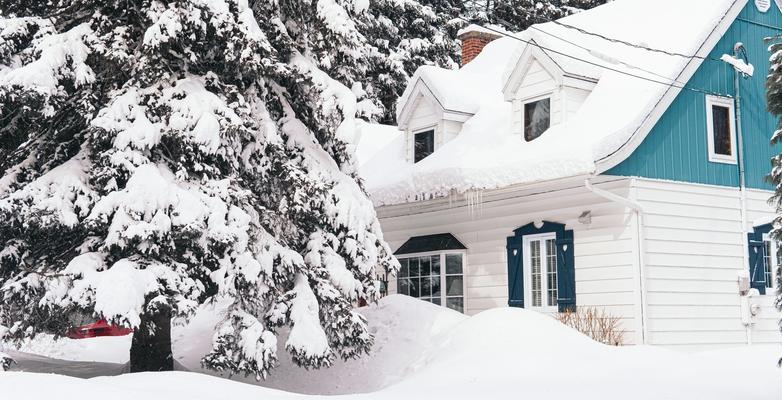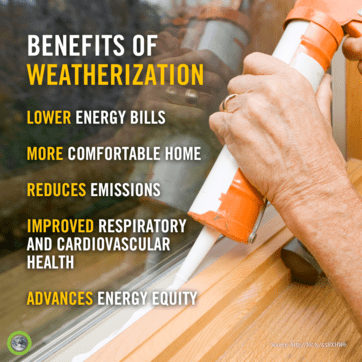
What is Weatherization?
No matter the season, weatherization can help you reduce your energy bills and make your home more comfortable.

It’s summer, and you’re blasting your AC. Winter finally rolls around, and you’re shivering under piles of blankets as you wait for the heat to come on. With the changing seasons comes the too-common plight of trying to make your home more comfortable.
We’ve been there.
But what if we told you that you can make your home more comfortable, reduce your energy bills, AND fight the climate crisis all at the same time?
Weatherization refers to home improvements that reduce the energy we use to make our homes more comfortable, including moisture control, air sealing, ventilation, and upgrades to insulation, doors and windows.
For example, air sealing your home through caulking and weatherstripping can prevent unwanted cold air from seeping inside during the winter and can help improve indoor air quality during the summer months. Not only does this improve the comfort of your home, but it means that you can cut down on your heating and cooling costs and make your home more energy efficient.
But you don’t have to navigate these home improvements alone! The first step is a professional home energy audit, which can give you a better idea of your home’s energy use, comfort, and safety – and what improvements make the most sense for your household.
The Inflation Reduction Act (IRA) also includes $8.8 billion in rebates for home energy efficiency and electrification projects which may include weatherization, according to the Office of State and Community Energy Programs, which will distribute these cost-saving measures once they become available later this year.
THE WEATHERIZATION-EQUITY CONNECTION
Weatherization plays an enormous role in advancing energy equity. In the US, lower-income households have a higher “energy burden,” which means that more of their total income is used for energy costs. According to the American Council for an Energy Efficient Economy, low-income households spent 8.1% of their income on energy costs compared to 2.3% of higher income households in 2017.
This is especially true in BIPOC communities. In this same year, Black households spent 43% more money on energy costs than white households. Latino households spent 20% more and Native American households spent 45% more, according to the report.
The good news is that there are government initiatives to help address this disparity. For example, the US Department of Energy (DOE) facilitates the Weatherization Assistance Program (WAP) “to increase the energy efficiency of dwellings owned or occupied by low-income persons; reduce their total residential energy expenditures; and improve their health and safety, especially low-income persons who are particularly vulnerable such as the elderly, the handicapped, and children.”
These efforts get results. On average, WAP services save low-income households an average of $372 per year on utility bills. But the benefits don’t stop there. Weatherization results in healthier living conditions and “fewer missed days of work (e.g., sick days, doctor visits), and decreased out-of-pocket medical expenses by an average of $514.”
THE BENEFITS GO ON

Beyond just saving money, weatherizing your home could also help cut residential and power plant emissions in a sector that comprises about 21% of total US energy consumption. By decreasing electricity demand from dirty coal and gas-fired power plants, weatherization also helps improve air quality in the communities close to these plants and reduce health impacts.
Other benefits of weatherization include fewer illnesses, increased property values, local economic growth, and so much more. According to the DOE, weatherization returns $2.78 in these “non-energy benefits” for every $1 invested in WAP.
TAKE ACTION NOW
Did you know that new climate laws like the Inflation Reduction Act (IRA) offer a range of tremendous incentives to help households of all income levels weatherize? Are you interested in learning more and electrifying your life? Pledge to take the next step with us.

